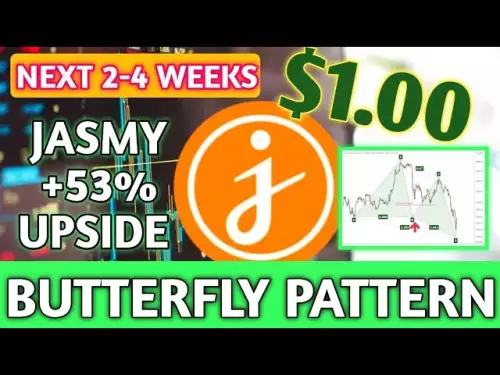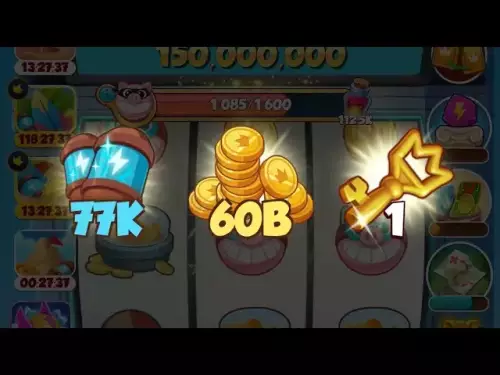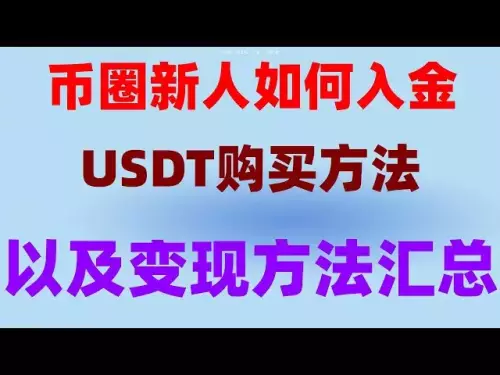-
 Bitcoin
Bitcoin $110200
-2.61% -
 Ethereum
Ethereum $4377
-8.92% -
 XRP
XRP $2.859
-6.00% -
 Tether USDt
Tether USDt $1.000
0.02% -
 BNB
BNB $840.3
-3.99% -
 Solana
Solana $188.1
-8.36% -
 USDC
USDC $0.9999
0.00% -
 TRON
TRON $0.3439
-5.24% -
 Dogecoin
Dogecoin $0.2085
-11.07% -
 Cardano
Cardano $0.8400
-9.29% -
 Chainlink
Chainlink $23.26
-11.27% -
 Hyperliquid
Hyperliquid $43.02
-6.59% -
 Ethena USDe
Ethena USDe $1.001
0.04% -
 Stellar
Stellar $0.3813
-7.26% -
 Sui
Sui $3.336
-10.37% -
 Bitcoin Cash
Bitcoin Cash $540.5
-8.39% -
 Avalanche
Avalanche $23.27
-9.85% -
 Hedera
Hedera $0.2288
-8.60% -
 UNUS SED LEO
UNUS SED LEO $9.572
-0.27% -
 Litecoin
Litecoin $107.8
-9.51% -
 Toncoin
Toncoin $3.115
-6.08% -
 Shiba Inu
Shiba Inu $0.00001195
-8.58% -
 Uniswap
Uniswap $9.635
-12.77% -
 Polkadot
Polkadot $3.733
-10.02% -
 Dai
Dai $1.000
0.01% -
 Cronos
Cronos $0.1550
-2.42% -
 Bitget Token
Bitget Token $4.483
-3.99% -
 Monero
Monero $265.7
-3.26% -
 Aave
Aave $312.1
-10.94% -
 Ethena
Ethena $0.6255
-10.84%
What are the common mistakes to avoid when using the KDJ indicator?
The KDJ indicator is a momentum oscillator used in crypto trading to spot overbought/oversold levels, but it should be combined with trend analysis, proper timeframe alignment, and confirmation tools like volume or Bollinger Bands to avoid false signals and improve accuracy.
Aug 06, 2025 at 01:56 pm
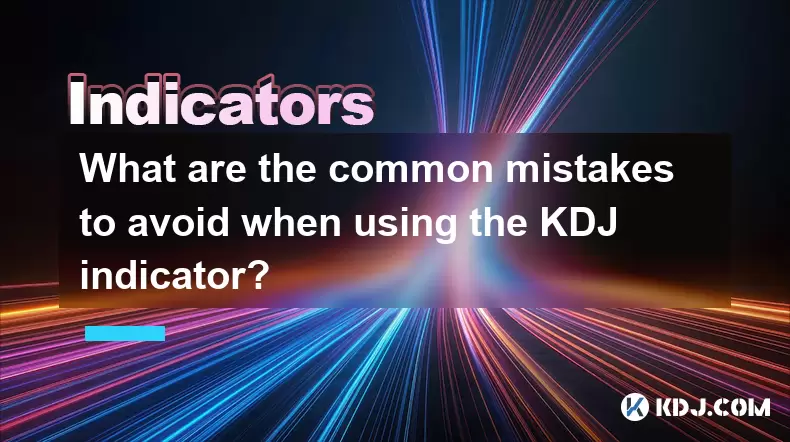
Understanding the KDJ Indicator and Its Components
The KDJ indicator is a momentum oscillator widely used in cryptocurrency trading to identify overbought and oversold conditions. It consists of three lines: the %K line, the %D line, and the %J line. The %K line reflects the current closing price relative to the price range over a specified period, typically 9 periods. The %D line is a moving average of %K, usually a 3-period simple moving average, and acts as a signal line. The %J line represents the divergence of %K from %D and is calculated as 3 × %K – 2 × %D. Traders often misinterpret these components as standalone signals, but they must be analyzed together for accurate readings. Misunderstanding how each line functions can lead to premature entries or exits from trades.
Overreliance on Overbought and Oversold Readings
One of the most common mistakes is treating overbought (above 80) and oversold (below 20) levels as immediate buy or sell signals. In trending cryptocurrency markets, prices can remain overbought or oversold for extended periods. For instance, during a strong bullish rally in Bitcoin, the KDJ may stay above 80 for several days without reversing. Acting solely on these thresholds without confirming trend direction or momentum strength often results in early reversals or missed continuations. Instead, traders should use overbought and oversold conditions as alerts and combine them with trend analysis, such as moving averages or support/resistance levels, to validate entries.
Neglecting Timeframe Consistency
Using the KDJ across inconsistent timeframes without proper alignment can produce conflicting signals. A trader might observe a bullish crossover on the 1-hour chart while the 4-hour chart shows a bearish divergence. Making decisions based solely on a lower timeframe increases the risk of noise-induced trades. To avoid this, align the KDJ analysis with a primary higher timeframe to determine the dominant trend. For example, if the 4-hour KDJ indicates a downtrend, avoid taking long positions based on a 15-minute KDJ oversold signal. Maintaining timeframe harmony ensures that signals are contextually relevant and reduces false triggers.
Failing to Adjust Settings for Volatile Cryptocurrency Markets
The default KDJ settings (9,3,3) may not suit the high volatility of cryptocurrencies like Ethereum or Solana. During periods of rapid price swings, the indicator can generate excessive whipsaws. Adjusting the parameters can help smooth the signals. For instance, increasing the %K period to 14 or applying a smoothing factor to %D can reduce noise. To modify the settings on most trading platforms:
- Open the charting interface and locate the KDJ indicator
- Click on the settings or properties of the indicator
- Change the Lookback Period from 9 to 14 for %K
- Adjust the Smoothing Period for %D from 3 to 5
- Consider altering the %J multiplier if needed
- Apply the changes and observe the updated behavior across historical price action
This customization helps align the KDJ with the asset’s volatility profile, improving signal reliability.
Ignoring Divergence Signals and Crossovers
Many traders focus only on overbought/oversold levels and overlook KDJ divergence, a powerful predictive tool. A bullish divergence occurs when the price makes a lower low, but the KDJ forms a higher low, suggesting weakening downward momentum. Conversely, a bearish divergence appears when price hits a higher high, yet KDJ records a lower high, indicating potential reversal. Additionally, crossovers between %K and %D should be interpreted with caution. A %K crossing above %D in oversold territory may signal a buy opportunity, but only if confirmed by volume or price action. Relying on crossovers without confirmation increases the likelihood of false signals, especially in sideways markets.
Not Combining KDJ with Other Technical Tools
Using the KDJ in isolation limits its effectiveness. It performs best when integrated with complementary tools. For example, combining KDJ with Bollinger Bands can enhance accuracy. When the price touches the lower band and the KDJ is in oversold territory with a bullish crossover, the probability of a bounce increases. Similarly, pairing it with volume indicators like OBV (On-Balance Volume) helps confirm whether momentum is supported by actual buying or selling pressure. To implement this:
- Add the KDJ and Bollinger Bands to the same chart
- Wait for the price to approach the lower or upper band
- Check if KDJ is in oversold or overbought zone
- Look for a %K/%D crossover aligning with the band touch
- Confirm with rising volume to validate the signal
This multi-layered approach reduces false positives and strengthens trade decisions.
Overlooking Backtesting and Historical Validation
Many traders apply the KDJ directly to live trading without testing its performance on historical data. This omission can lead to repeated losses. Backtesting involves applying the KDJ strategy to past price movements to evaluate its success rate. On most platforms:
- Select the cryptocurrency pair and timeframe
- Apply the KDJ with desired settings
- Use the platform’s strategy tester or replay function
- Manually simulate entries and exits based on KDJ signals
- Record win rate, risk-reward ratio, and drawdowns
This process reveals whether the strategy is viable under real market conditions. Skipping backtesting means operating on assumptions rather than evidence, increasing the risk of systematic errors.
Frequently Asked Questions
Can the KDJ indicator be used effectively in ranging cryptocurrency markets?
Yes, the KDJ performs well in sideways or ranging markets where price oscillates between support and resistance. In such environments, overbought and oversold signals are more reliable because the market lacks a strong directional bias. Traders can use KDJ crossovers near the 20 and 80 levels to time entries, provided they confirm with horizontal support/resistance zones.
How does the KDJ differ from the Stochastic Oscillator?
The KDJ is an enhanced version of the Stochastic Oscillator, with the addition of the %J line, which amplifies the divergence between %K and %D. While the Stochastic typically displays only %K and %D, the KDJ includes this third component, making it more sensitive to momentum shifts. This added sensitivity can be beneficial but also increases the risk of false signals in choppy markets.
Should I use KDJ on all cryptocurrency pairs equally?
No, different cryptocurrencies exhibit varying volatility and liquidity. Major pairs like BTC/USDT or ETH/USDT tend to have more predictable patterns, making KDJ more reliable. Low-cap altcoins with erratic price movements may generate misleading KDJ signals due to manipulation or low trading volume. Adjust settings or avoid using KDJ altogether on highly volatile, illiquid tokens.
Is it advisable to automate KDJ-based trading strategies?
Automation is possible but requires careful optimization. Since KDJ can produce frequent signals, a bot might execute too many trades, incurring high fees. Ensure the algorithm includes filters such as minimum volume, trend confirmation, or candlestick patterns before triggering orders. Test the bot extensively in a demo environment before deploying with real funds.
Disclaimer:info@kdj.com
The information provided is not trading advice. kdj.com does not assume any responsibility for any investments made based on the information provided in this article. Cryptocurrencies are highly volatile and it is highly recommended that you invest with caution after thorough research!
If you believe that the content used on this website infringes your copyright, please contact us immediately (info@kdj.com) and we will delete it promptly.
- Bitcoin Price, Cardano, Layer Brett: What's the Haps?
- 2025-08-26 05:30:13
- Stablecoins, DeFi, and Financial Autonomy: Navigating the Decentralized Revolution
- 2025-08-26 05:05:13
- Mavryk's $MVRK Token: Paving the Way for Real-World Asset Tokenization
- 2025-08-26 03:10:13
- Arctic Pablo Coin: The Meme Coin Presale Poised to Redefine Crypto in 2025?
- 2025-08-26 03:25:13
- ICP Trading Tumbles, PI Plummets, But BlockDAG Sales Soar: A Crypto Contrast in 2024
- 2025-08-26 01:25:13
- Bitcoin, XRP, and Strategy: Navigating the Crypto Landscape Like a New Yorker
- 2025-08-26 01:25:13
Related knowledge
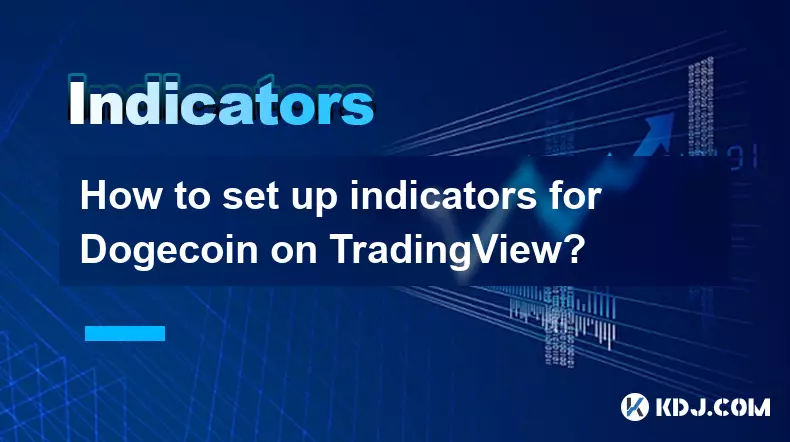
How to set up indicators for Dogecoin on TradingView?
Aug 25,2025 at 04:23pm
Understanding Dogecoin and TradingView1. Dogecoin, initially created as a meme-based cryptocurrency, has evolved into a widely traded digital asset. I...

What does it mean when the +DI and -DI cross frequently in the DMI indicator but the ADX is flattening?
Aug 11,2025 at 03:15am
Understanding the DMI Indicator ComponentsThe Directional Movement Index (DMI) is a technical analysis tool composed of three lines: the +DI (Positive...

What does the sudden appearance of a "dark cloud cover" candlestick pattern during an uptrend indicate?
Aug 13,2025 at 11:35am
Understanding the 'Dark Cloud Cover' Candlestick PatternThe dark cloud cover is a bearish reversal pattern in technical analysis that typically appear...

What does it mean when the moving average, MACD, and RSI all send buy signals simultaneously?
Aug 11,2025 at 01:42pm
Understanding the Convergence of Technical IndicatorsWhen the moving average, MACD, and RSI all generate buy signals at the same time, traders interpr...

What does it mean when both the KDJ indicator and the RSI show overbought signals simultaneously?
Aug 13,2025 at 11:35am
Understanding the KDJ Indicator in Cryptocurrency TradingThe KDJ indicator is a momentum oscillator derived from the Stochastic Oscillator, widely use...

What does it mean when the price is trading above the SAR indicator but the red dots are densely packed?
Aug 09,2025 at 11:49pm
Understanding the SAR Indicator and Its Visual SignalsThe SAR (Parabolic Stop and Reverse) indicator is a technical analysis tool used primarily to de...

How to set up indicators for Dogecoin on TradingView?
Aug 25,2025 at 04:23pm
Understanding Dogecoin and TradingView1. Dogecoin, initially created as a meme-based cryptocurrency, has evolved into a widely traded digital asset. I...

What does it mean when the +DI and -DI cross frequently in the DMI indicator but the ADX is flattening?
Aug 11,2025 at 03:15am
Understanding the DMI Indicator ComponentsThe Directional Movement Index (DMI) is a technical analysis tool composed of three lines: the +DI (Positive...

What does the sudden appearance of a "dark cloud cover" candlestick pattern during an uptrend indicate?
Aug 13,2025 at 11:35am
Understanding the 'Dark Cloud Cover' Candlestick PatternThe dark cloud cover is a bearish reversal pattern in technical analysis that typically appear...

What does it mean when the moving average, MACD, and RSI all send buy signals simultaneously?
Aug 11,2025 at 01:42pm
Understanding the Convergence of Technical IndicatorsWhen the moving average, MACD, and RSI all generate buy signals at the same time, traders interpr...

What does it mean when both the KDJ indicator and the RSI show overbought signals simultaneously?
Aug 13,2025 at 11:35am
Understanding the KDJ Indicator in Cryptocurrency TradingThe KDJ indicator is a momentum oscillator derived from the Stochastic Oscillator, widely use...

What does it mean when the price is trading above the SAR indicator but the red dots are densely packed?
Aug 09,2025 at 11:49pm
Understanding the SAR Indicator and Its Visual SignalsThe SAR (Parabolic Stop and Reverse) indicator is a technical analysis tool used primarily to de...
See all articles





















